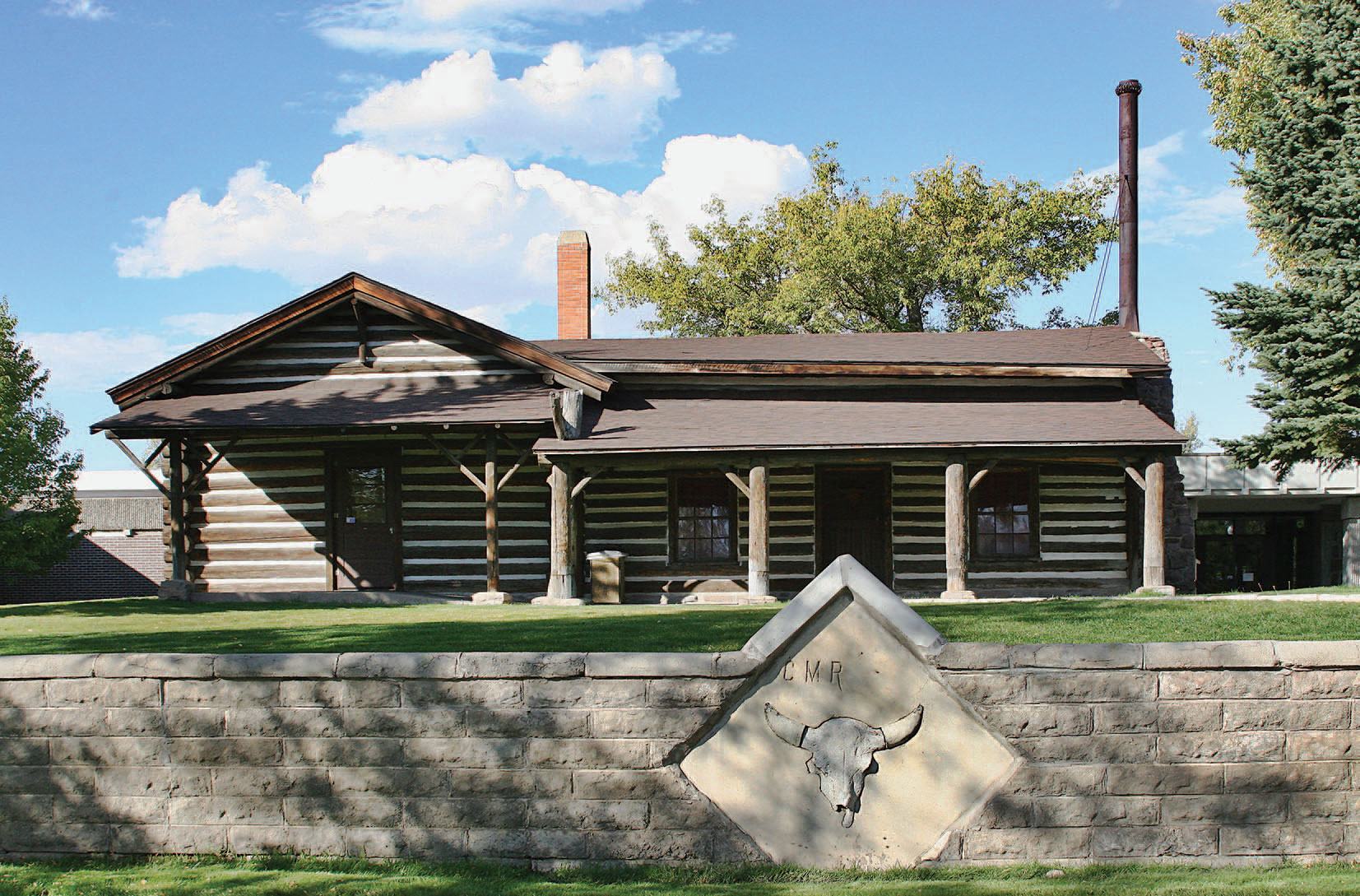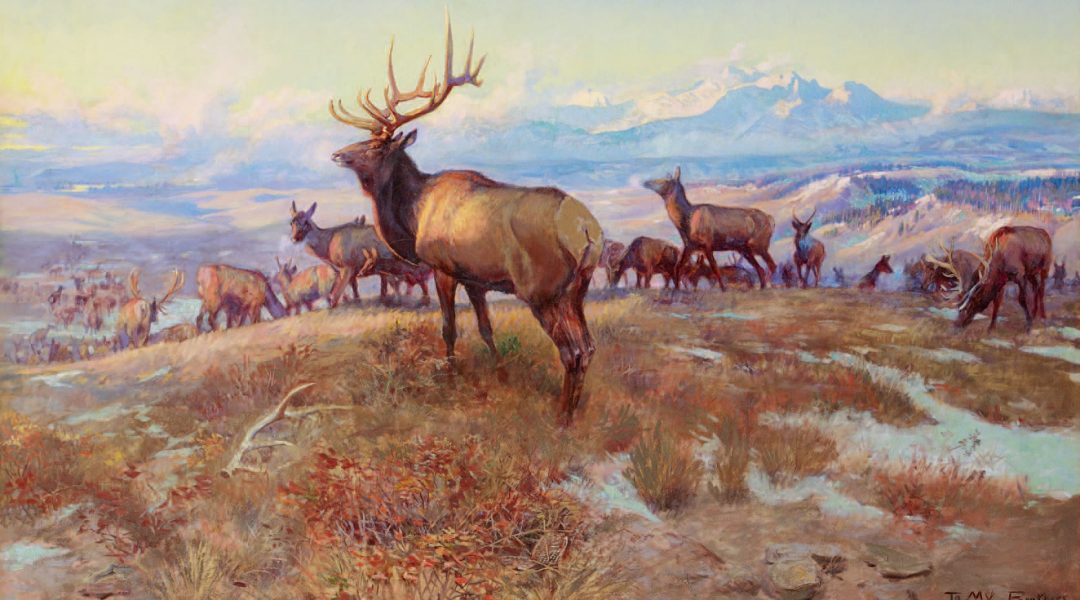March brings the annual art lovers’ celebration to C.M. Russell’s Montana hometown.
Like renowned Western artist C.M. Russell, Michael Duchemin is a born storyteller. As the executive director of the C.M. Russell Museum in Great Falls, Montana, he definitely has some tales to tell about the museum’s namesake. C&I recently spoke to Duchemin about the museum, the importance of The Russell Exhibition and Sale that benefits it, and March’s annual Western Art Week, which takes over the whole town.
Cowboys & Indians: Your museum is devoted primarily to the work of C.M. Russell. You have more than 800 works in your collection, from Russell’s art — bronzes, oils, watercolors, pen-and-ink sketches, drawings, and some clay and plaster models — to his personal studio effects and illustrated letters. What are some of the not-to-miss pieces?
Michael Duchemin: The Exalted Ruler, a very large painting of an elk herd on the Montana landscape; The Fireboat, another quite famous painting; The Jerk Line. We’re known for our volume, and some of that includes sketches, watercolors, and sculpture by Russell. Russell is the majority of what you see.
C&I: Let’s jump in with Western Art Week and The Russell Exhibition and Sale, now coming up on its 48th anniversary. The sale and exhibition together are an important fundraiser for the museum, bringing in $9.4 million last year. A major draw is the Saturday night live auction of original C.M. Russell paintings, which you receive from donors. The idea of selling Russells to fund the C.M. Russell Museum isn’t new. ...
Duchemin: There was actually an earlier version of the C.M. Russell art auction and sale in 1927, ’28, and ’29 to raise funds to create the museum, which, when it opened, was the first Western museum in the United States. But it was not an auction; it was an art show and sale. Will Rogers was the master of ceremonies the first year.
C&I: Tell us about the events that led up to the museum’s opening.
Duchemin: When Charlie Russell died in October of 1926, he and his wife were in the process of adding an addition to the log cabin studio where they lived, and Nancy was also building a house in Pasadena [California]. She was done with Great Falls, and she said she would donate the log cabin studio if the city would buy it. Nancy was creating a gallery next to the studio where she could sell his work. So the city raised $25,000 to buy the three lots and finish the gallery addition, and the museum opened on July 4, 1930, in the midst of the [Great] Depression.
C&I: So a portion of today’s C.M. Russell Museum is actually part of the original gallery space?
Duchemin: Yes, that’s the Russell Memorial. The first 1,000 square feet is the original gallery. There’s also the original log cabin studio and an outdoor sculpture garden in Russell Memorial Park.
C&I: How did Russell, who was originally from St. Louis, end up in Great Falls?
Duchemin: He came to Montana to work as a cowboy in 1880, when he was 16. His first job was working on a sheep ranch. His second job was working for Jake Hoover, a hunter and mountain man who was providing meat for the mining and cowboy camps. He learned about animal anatomy and got to know the camps by delivering meat to them. Closer to age 20, he started to cowboy and worked on ranges in Judith Basin for the next 10 years. As he was aging out of being in the saddle, his art was starting to take off, and that’s about the time he married Nancy — he was 32 and she was 18. They came to Great Falls in 1897, and he transitioned from being a cowboy to a cowboy artist.
C&I: And a financially successful one, thanks to Nancy.
Duchemin: He was trading paintings to pay his bar tab around Montana before Nancy hooked up with him. She helped him focus on his career and developed relationships with buyers. She was a working woman, so a lot of the other ladies in town didn’t respect her because she was kind of pushy. She had to go toe-to-toe with millionaires who were buying his paintings. They all wanted a deal, and the little girl negotiating with them proved to be pretty tough.
C&I: How tough?
Duchemin: The final commission tells the story. In 1925, Edward Doheny, an oilman in Los Angeles, paid $35,000 for History of the West, I and History of the West, II, a two-panel oil mural, 2½ feet by 43 feet, and it was the highest paid commission for any artist, Western or otherwise. It shows how important Western art was in the early 20th century and how significant Russell was as an artist. Back then, Western art was American art. He sold every painting he painted in his lifetime.
C&I: How’d he sell his work?
Duchemin: Russell would paint all summer in Montana and they’d crate up the work and go to New York and show in The Folsom Gallery with 25 to 30 paintings, and Nancy would work the room. He was a prolific storyteller, and what would sell the paintings were the stories he’d tell with them.
C&I: He also wrote stories. There are three published books of his cowboy stories — Rawhide Rawlins, More Rawhides, and Trails Plowed Under: Stories of the Old West — but he was such a prolific painter. He must’ve worked nonstop.
Duchemin: There are more than 4,000 works identified, and roughly 1,700 Native American, 1,300 cowboy- and Western-themed, and 1,000 wildlife. He has defined what we know today as Western art, and in each category, he had a substantial body of work. He’s probably the major Western artist collected today.
C&I: His style, which some might call romantic realism, was simple and straightforward.
Duchemin: He painted in what became an anachronistic style. He was familiar with the Italian futurists and impressionists and expressionists, and he understood them and knew artists that painted in modern ways, yet he chose to paint in this style, which was considered outdated and old-fashioned, even in his lifetime. He chose to paint that way because he was intent on capturing this place and subjects that were disappearing forever. He was here in the 1880s; it was before the railroad, and he could tell everything he was experiencing was about to go away forever. So in his lifetime, his desire was to capture this place before it was gone.
 C.M. Russell's log studio was built in 1903./Photography: Courtesy The C.M. Russell Museum
C.M. Russell's log studio was built in 1903./Photography: Courtesy The C.M. Russell Museum
C&I: Yet his house was quite modern. It looked like a rustic log cabin, but it was actually quite high-tech for its day.
Duchemin: His house was built in 1900 and had indoor plumbing, electricity, and a telephone. It was modest, but high-style, especially for Great Falls. The studio where he painted was designed to look like a log cabin on the prairie. On the one hand, there was Nancy in the home looking to the future and Charlie in his studio looking backward.
C&I: You mean metaphorically, right?
Duchemin: Charlie lived in the past. He didn’t like automobiles, he rejected modern society and used his wife for cover. She was the one who looked forward, and that allowed him to stay in the past.
C&I: Is it fair to say that some of his paintings are a little corny?
Duchemin: Some of his work is corny. He has a Western sense of humor and he’s hoping for that. What he’s going for is to be an authentic painter who captures motion and movement in art better than anyone and paints with a level of authenticity because he experienced and saw what he participated in.
C&I: Why is Russell still relevant — and popular — today?
Duchemin: Charlie Russell is a storyteller through his images. He was able to capture a moment in time that often suggested a predicament. Charlie left it to the viewer’s imagination to think about the events that led up to the moment depicted in his paintings, and the subsequent outcomes. People wanted to hear stories then. And they still want to hear stories about the West.
For a complete list of the shows featured during Western Art Week, March 15 – 19, visit www.westernartweek.com.
From the February/March 2017 issue.














